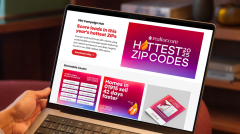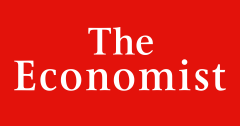The real estate landscape is shifting, and the 2025 Hottest ZIP Codes report from Realtor.com reveals crucial insights about where buyer demand is strongest. For real estate agents, understanding these trends isn’t just about keeping up with the market—it’s about positioning yourself strategically to serve clients who are increasingly selective, financially prepared, and focused on value over simple affordability.
This year’s data shows markets defined by rapid sales, intense competition, and buyers who know exactly what they want. Beverly, Massachusetts (ZIP 01915) claimed the top spot, but the broader story extends far beyond a single ZIP code. The patterns emerging from this year’s hottest markets provide a roadmap for agents looking to understand where opportunities lie and how buyer behavior is evolving.
Northeast and Midwest Dominance Continues
For the third consecutive year, the South and West were completely absent from the top 10 list. Instead, the Northeast and Midwest dominated, with Massachusetts, New Jersey, Connecticut, and Ohio each contributing two ZIP codes to the rankings.
This regional concentration reflects persistent supply constraints in these areas, creating opportunities for agents who understand how to navigate competitive markets. Listings in these top ZIP codes received between 3.3 and 5.2 times the views compared to the national average, while homes sold 30 to 42 days faster than the typical U.S. home.
Inventory Remains Critically Low
While national housing inventory was 28.9% higher year-over-year in June 2025, the hottest ZIP codes tell a different story. These markets averaged inventory levels 58.9% below 2019 levels—significantly more constrained than the national average of 12.9% below pre-pandemic norms.
This scarcity is driving the urgency that defines these markets. Buyers face fewer choices, leading to faster decision-making and more competitive bidding situations that agents must be prepared to handle.
Relative Affordability Trumps Absolute Price
One of the most significant insights from this year’s data is how buyers are approaching affordability. Seven of the top 10 ZIP codes had median listing prices above the national average of $441,000, yet six were more affordable than their surrounding metro areas.
This represents a fundamental shift in buyer psychology. Clients aren’t just looking for the cheapest option—they’re seeking value within their preferred regions. Beverly, Massachusetts, for example, had a median listing price of $719,000, more than $250,000 above the national norm, but nearly 16% below the Boston metro average.
High-Income Buyers Drive Demand
The buyer profile in these hot markets is distinctly different from national averages. The typical household income in these ZIP codes was $114,000, well above the national average of $79,000. Credit scores averaged 759 versus 748 nationwide, and down payments ranged from $42,000 to $143,000, compared to the national norm of $30,000.
These zip codes are predominantly older (average age 56 versus 54 nationally), which could mean interested buyers lean older. Equity-rich buyers have the upper-hand in today’s market, suggesting many shoppers in these ZIPs are move-up buyers rather than first-time purchasers.
Big-City Exodus Patterns
Much of the viewership in these hot ZIP codes came from major metropolitan areas. New York City was the top out-of-metro source for three ZIP codes, Boston for four, and Washington, D.C. for two. Households in these metros earn an average 50% more than the national median, bringing strong financial credentials to competitive markets.
Only three ZIP codes (01915 in Boston metro, 63021 in St. Louis, and 07470 in New York City metro) saw more within-metro viewership than out-of-metro interest, indicating significant migration patterns that agents should understand.
Suburban Appeal with Urban Access
All top ZIP codes in 2025 shared a common characteristic: suburban environments with st





